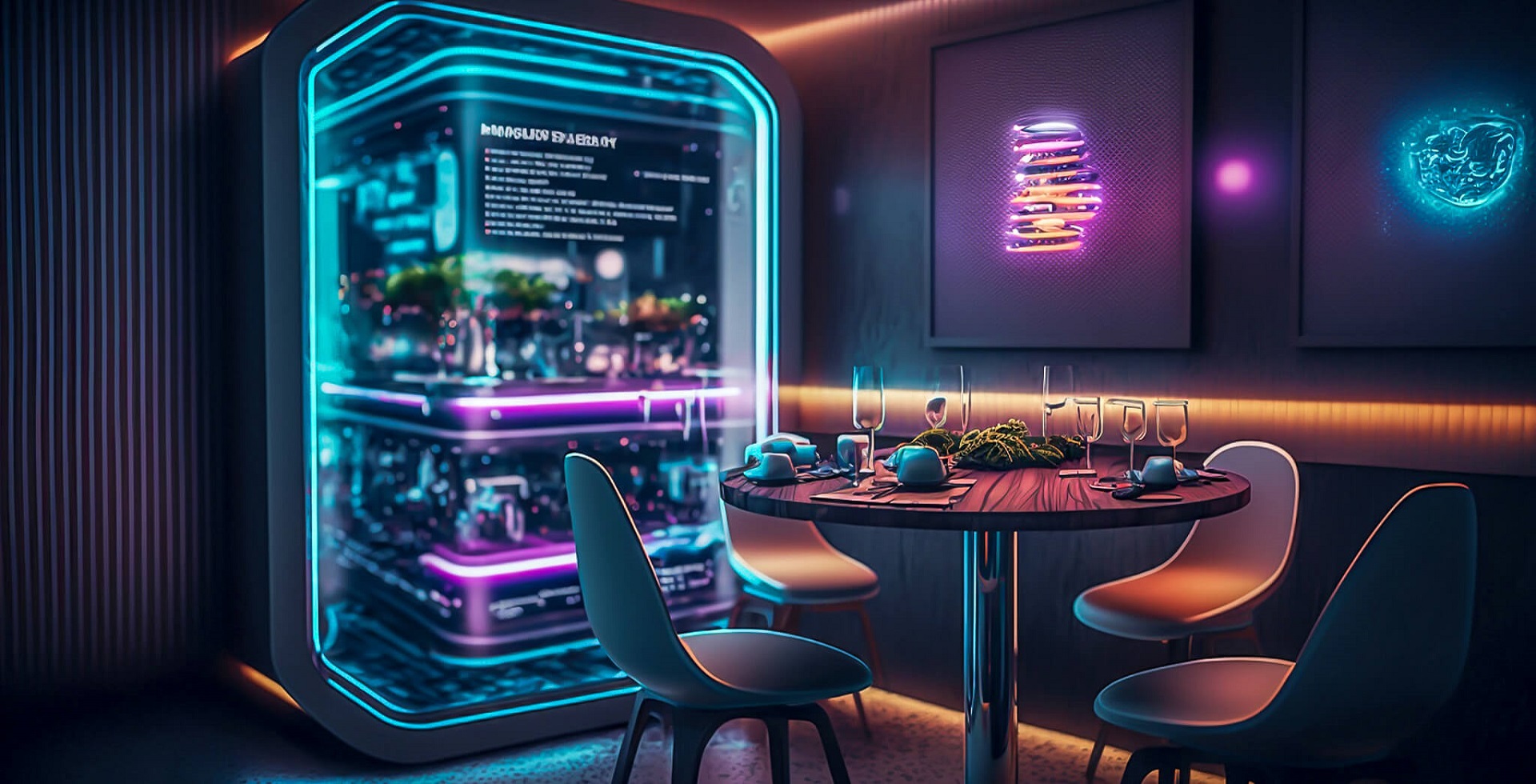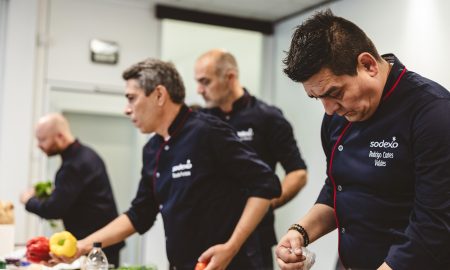What’s next? What’s coming? What’s not? What do we need to be ready for it and, above all, how do we do so? In times like these, restaurateurs are really craving answers to these kinds of questions. For some, grappling more than ever with the issue of skills shortages, answers are particularly urgent – preferably ones that can be put into effect within the next few weeks and months. However, those who are able to focus on longer-term perspectives are adopting a more far-sighted approach. And for good reason: In the last fifty years, no stone has been left unturned in terms of gastronomy. So what will the next 50 years be like?
Future of dining: The big data game
Giving a reliable answer without the aid of a crystal ball may seem impossible at first glance, but it is by no means impossible. After all, since we understand data and how to interlink it, we now have scientific tools that can anticipate tomorrow with surprising precision today. A particularly relevant aspect of this is what are known as megatrends. Anyone who studies them and is able to read their messages correctly is in a position to draw very accurate conclusions for the (gastronomic) future, at least up to the year 2040. While the situation may be somewhat less clear for the period after 2040, the basic motives can be identified very well on the basis of the available data and the megatrends based on them up to and including that year.
Ok, perhaps it doesn’t sound so simple after all. However, thankfully there are specialists for this. Researchers who do nothing but distill these megatrends from data on a daily basis. Headquartered in London, market research company Euromonitor does just that. It has been looking a little further into the future than most since the 1970s.
Megatrends are fundamental changes in consumer behavior that show how the market is changing in the long term. Such trends arise from a wide variety of circumstances: the economic situation, technological innovations, demographic changes, changing environmental conditions, but also cultural values. In short, from everything that determines human behavior. Since megatrends draw on a wide range of consumer data, they are considered to be very reliable. Especially in the foodservice sector, where many people around the world show what they like when, how and where through consumption, megatrends and their meanings can be summed up surprisingly well.
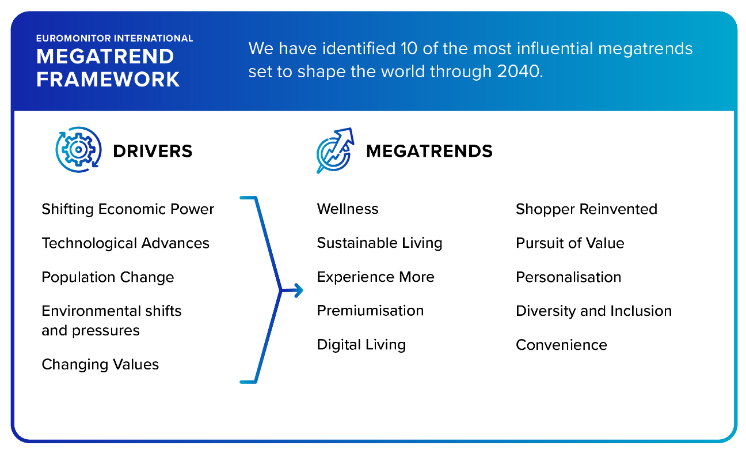
Image: Euromonitor International
But let’s get down to business: How will we purchase food and ingredients for restaurants in 2073? How will it be produced and processed? How will we serve food to the end consumer? In other words, what is the overall concept of the foodservice of the future?
Foodservice is timeless
“Eating will remain one of those tangible things that we want to taste, feel, smell and share and experience with others,” Robert J. C. Munday Executive Vice President Marketing & Customer Solutions at RATIONAL. “And that’s exactly why we know: Foodservice in general and restaurants in particular are in principle something timeless. People will continue to want to eat, drink and enjoy together in specially designed venues. Because it’s simply rooted in a fundamental basic analog human need. Despite digitalization, no one will want to do without it in the future.” For now, that should give restaurateurs a sense of optimism. But how exactly will we taste, feel, smell and share with others in the future?
Ghost kitchens will shape the future of foodservice
Here’s what we know today: in fifty years, automation will have permeated every stage of gastronomic production processes. What sounds like a rather abstract vision for the future actually started a long time ago – in the form of ghost kitchens. Whereas conventional restaurants feature a dining area and service staff, ghost kitchens prepare dishes exclusively for delivery. They’re also known as “invisible kitchens,” because it’s often hard to tell what they are from the outside, especially in urban areas. Which makes sense, since all they do is cook food and send it out with the help of a delivery crew.
In 50 years, however, these ghost kitchens could become veritable ghost production centers. In every residential area, in every apartment complex, and in every high-rise office building, they will be responsible for the majority of commercial food procurement and automated (pre-)processing. As a result, the number of private kitchens will decrease significantly.
Food delivery could take place in two ways in 2073. For one, an extensive network of dumbwaiters could be responsible for conveying food between ghost kitchens and their customers in commercial foodservice, private homes, and some segments of the restaurant industry. Besides guaranteeing fast, cost-effective transportation, these dumbwaiters will greatly improve sustainability in both delivery and preparation. To ensure short delivery routes, more food (whether conventional or artificial) will be cultivated and produced on-site — either directly in the central kitchen, or perhaps even on the facade or roof of the building itself.
For another, automated drone usage will increase dramatically, especially in the B2B segment. Besides allowing larger quantities to be shipped directly from agricultural producers or wholesale markets, these will facilitate food procurement and distribution dynamically on a just-in-time basis. Which brings us to the subject of preparation: where will food be prepared in the future, and more importantly, how?
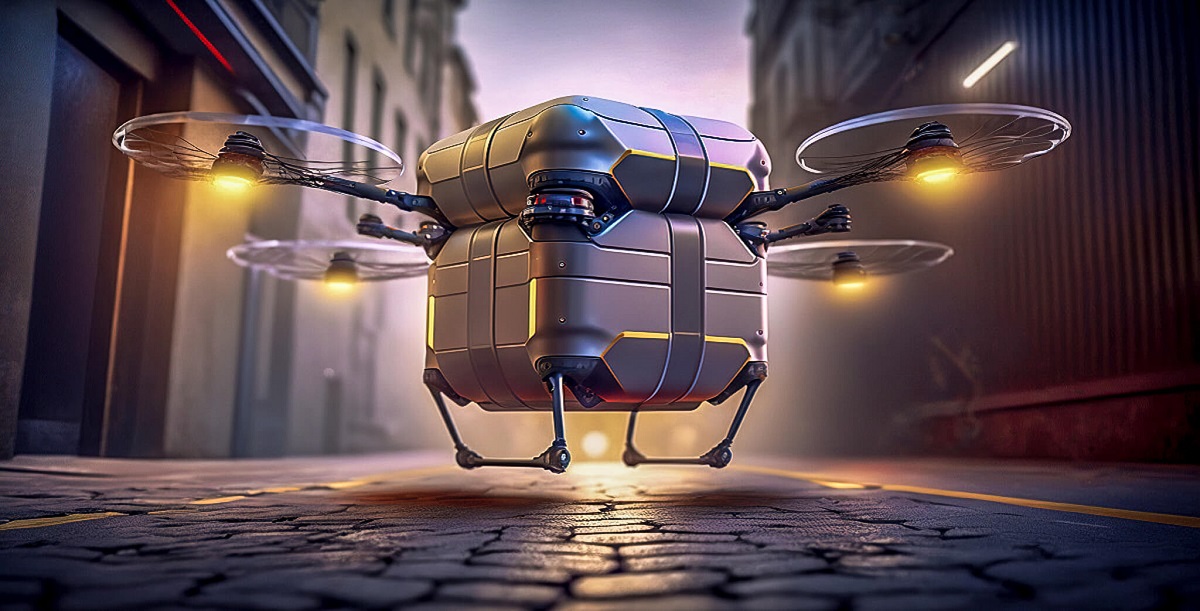
Image: AdobeStock | BPawesome
Megatrends show that the gastronomy of the future has two faces
First thing’s first, Gastronomy will have two faces in 2073. One is in the form of hyper-technologized takeaway vending machines. On the other hand, it takes the form of sophisticated gastronomy that is highly aesthetically pleasing, geared towards analogous, deeply personal experiences. But let’s stick with the take-away machines for now.
According to Euromonitor, these result from two megatrends, namely the phenomenon of convenience food and that of personalization, in other words, a development towards more individual eating solutions. We already know a bit about it from certain fast food chains, where you can ” build” your burger with individual ingredients using a “modular system”. Either way, these take-away vending machines will not require human employees to operate, but rather will be able to prepare everything automatically. It is quite possible that the “modular” components of individual dishes will be prepared in ghost kitchens, further shortening the time required for mechanical preparation of these vending machines. In any case, 3D printers will in all likelihood also play their part in producing individual components for certain dishes. After all, there are already a few restaurants that successfully rely on 3D printed food.
Due to the rapid rise of take-away concepts in recent decades, it can be assumed that such machines will be omnipresent in 2073. This is not only because they are practical, but also because they cost very little thanks to the relatively small amount of effort required to produce dishes. Sure, it’s a very anonymous, high-tech affair. And that’s precisely why it’s also wonderful news for restaurateurs of the future, who see restaurants as analog places of enjoyment. After all, dishes prepared by actual real people will continue to be in demand in 2073. The only difference is that such dishes will become even more important, and more highly regarded, than they are today.
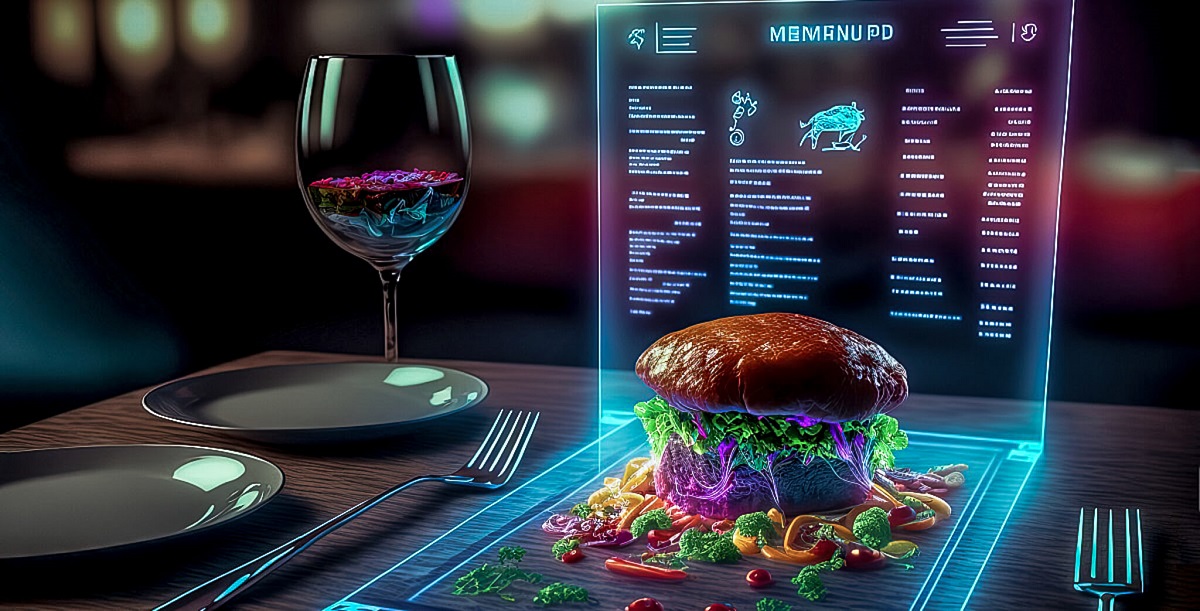
Image: AdobeStock | QuietWord
Foodservice of the future is tailor-made
One thing is for sure: Both the take-away machine and the restaurant with real people in the kitchen will depend on connected guests. In other words, guests with smartphones and apps, if that’s what they’re still called in 2073.
Why? Let’s start by explaining it using the take-away machines. As impersonal, automated and crowd-pleasing as their food may seem from today’s perspective – the complete opposite will be true. The ordering process and payment will be exclusively digital. In other words, during the ordering process, it has already been conveyed how the customer would like to have this or that dish. This is not said by the customer themselves, but rather by the data associated with the order process. Health data with possible allergies, real-time transmission of nutrient deficiencies, taste and ethical preferences – all this is done automatically, for example, through smartwatches, chips or devices that are much more directly connected to our body than is the case today.
The result is a meal that covers all taste requirements, all health needs within a very short time and at a rock-bottom price. Not bad, right? The following is worth noting: The preparation of automated dishes will no longer takes place unilaterally, as it does today. In other words, first the restaurant cooks, then the consumer eats. Instead, this manufacturing process will be largely shaped by the consumer in real time – albeit only passively. This is because the data they transfer at the time of the order determines what goes into the dish they’ve ordered – and what doesn’t.
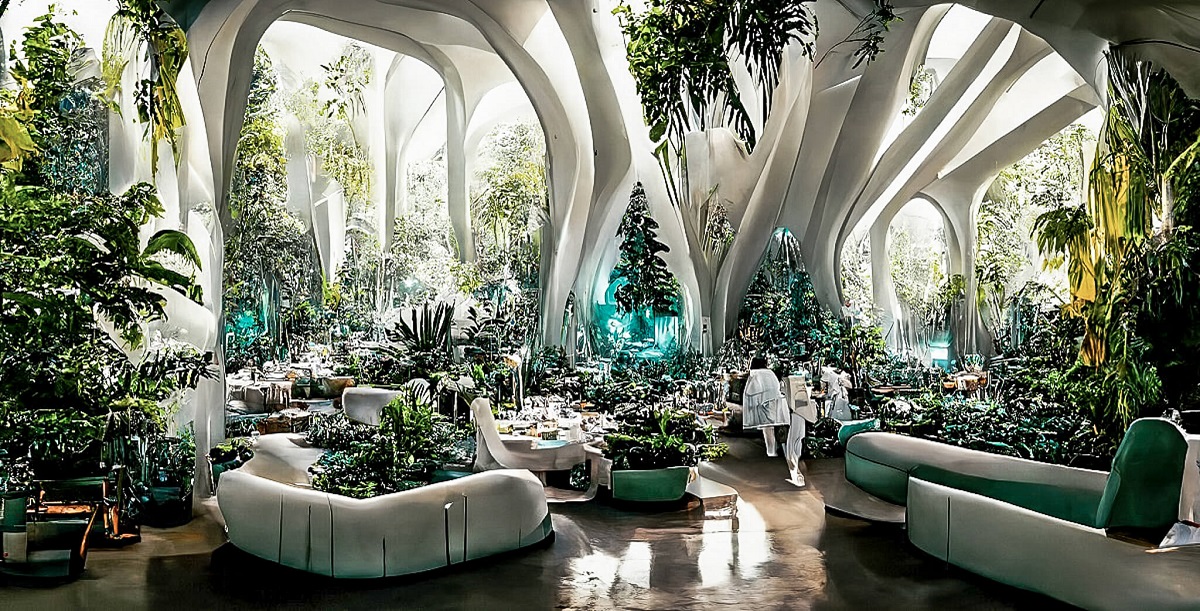
Image: AdobeStock | Blue Planet Studio
Does the future of dining still have real restaurants on offer?
Here’s what we know today: People will continue to want to go to a restaurant. There is no data contradicting this. On the contrary, the two megatrends of “premiumization” and “more experience” form the perfect framework for the high-end foodservice business segment.
First of all, this means one thing: Just as the quality of food in restaurants has increased dramatically over the past few decades, it will continue to do so into 2073. What does this mean? The three-star level will then be more or less standard. The reason for this is partly, but not exclusively, due to the increased production efficiency made possible by an expanded ghost-kitchen infrastructure. Cutting fresh broccoli, steaming it, cutting up whole fish, preparing stocks, reducing sauces – in the future, all this will no longer happen in the (star) restaurant kitchen itself, but rather in ghost kitchens.
And what will happen to QR codes?
In turn, the majority of these tasks are not performed by people, but by machines and cooking systems. This means maximum precision and quality assurance. However, it should be mentioned that it will take some time before this happens. The young chef of today will continue to be needed for a long time to come – until they are ready to retire, at the very least. Then, when the time really comes, what else will the chefs at the restaurant do? They will be creative, truly creative that is. Their dishes will tell stories all the more because they can use them to express what they’re really about. And it is precisely this cuisine that will then be presented to the guests of the hospitality of the future as an experience in the dining room.
By the way, service staff will still play a key role in telling these stories and will remain an indispensable part of the analog restaurant experience. However, they will be intensively supported by state-of-the-art technologies – the forerunners of which are already emerging. Keyword: QR codes or something similar. In the restaurant of the future, they will be everywhere: on every plate, each container, the furniture and even the wine bottle. They will become a low-threshold medium of interaction between the restaurateur and their guest. Whether it’s the products within a dish, the vintage of the wine, the supply chain of a particular ingredient, the backstory of a froth or the decor in the dining room – QR codes (or maybe even NFT chips?) will create touchpoints between the restaurant and its guest that will set new standards.
So let’s go over it again: The new role of ghost kitchens, the opportunities presented by digital, hyper-connected food ordering, the future creative spurts of chefs, the luxury of attentive service, and the new opportunities for interaction between guests and restaurateurs through QR codes all portray an enticing picture for what the restaurant industry could look like in 2073.
Therefore, it’s no wonder that Dr Peter Stadelmann, CEO of RATIONAL AG, is extremely confident about the future of foodservice. He emphasizes one thing in particular: “The difference between food intake and the dining experience in the restaurant will continue to diverge in the coming decades,” he says. “This is great news for restaurants! After all, it is precisely restaurants that provide us humans, as social beings, with moments that go far beyond our collective caloric intake: Through its unique atmosphere, its service that will be even more attentive in the future, and dishes that tell stories with a creativity never seen before. I am convinced that the technologies of the future are a unique opportunity for foodservice. So in this vein: 2073, here we come!”


